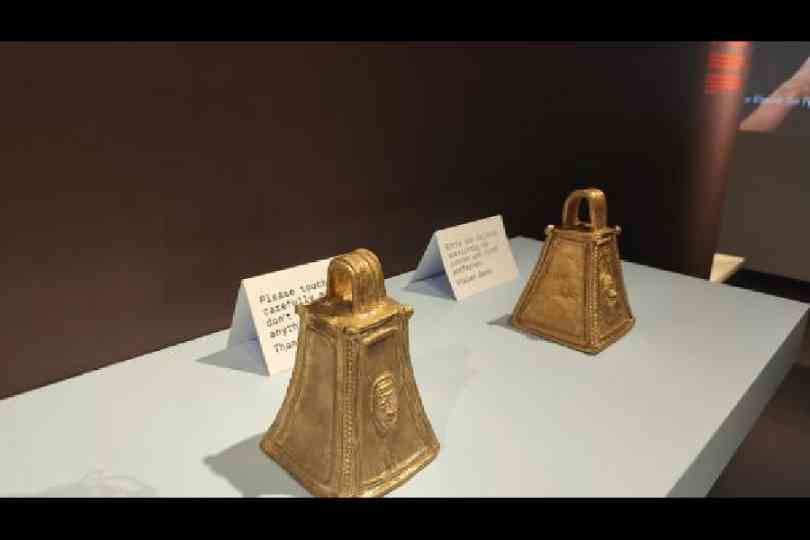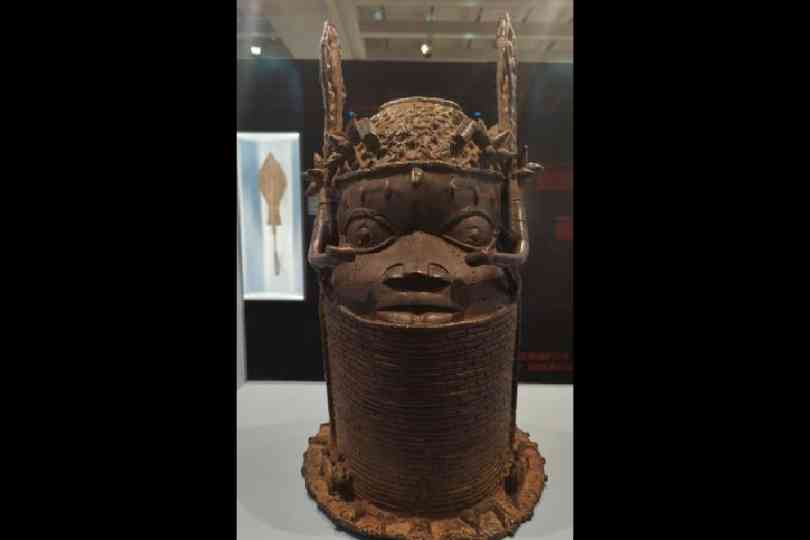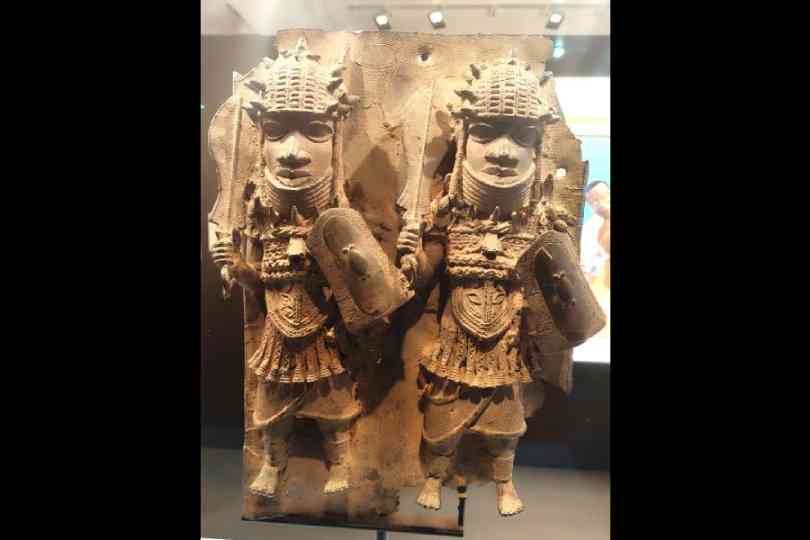Tucked away in the midst of the beautiful Old Botanical Gardens in central Zurich is one of the city’s most insightful museums, the Ethnographic Museum of the University of Zurich. Also called the Volkerkundemuseum locally, this is one of the oldest museums dedicated to ethnology in Switzerland.
As the name suggests, it is a social anthropological museum dedicated to the study and preservation of objects from all over the world with a key focus on the communities associated with these objects. In fact, most of the objects in its collection are researched collaboratively with the members of these communities.
Further, the museum is committed to displaying artefacts from non-European cultures, thereby creating awareness for its visitors. The objects are displayed through a series of changing exhibitions throughout the year.

Bronze casting: Visitors are encouraged to touch and hold the final product
Treasures of Benin
Starting August 24 this year, the Ethnographic Museum has a compelling exhibition titled Benin Dues, which displays the renowned bronzes from the kingdom of Benin, a country in western Africa. The territory of the historic Kingdom of Benin, which was home to the native Edo people, lies within the borders of present-day Nigeria.
Benin bronzes are a very significant part of not only the country’s artwork but is an integral part of its history and culture. They consist mainly of decorative plaques, commemorative heads, tusks, figurines of animals, humans, etc., which were made by royal craftsmen working for the Oba (traditional ruler) of Benin.
These royal artefacts were looted when the kingdom of Benin was attacked in 1897 by the British. British troops defeated the king, destroyed the capital and confiscated thousands of bronze artefacts from the palace. Consequently, these artefacts were sold in European markets as Benin Bronzes. In 1940, some Benin artefacts also entered the collection of the Ethnographic Museum.
The exhibition traces the history of these objects, including how they ended up in Switzerland and the views of its partners in Nigeria about them. It is based on an extensive study and research conducted by the Benin Initiative Switzerland (BIS) and has been developed in conjunction with Nigerian experts from Benin city as well as diaspora groups in Zurich. The exhibition aims to not only protect these objects, but also unearth their cultural heritage and engage with Nigerian communities while acknowledging their ownership claims.
Journey to Switzerland museums
The museum traces the movement of these Benin objects into Switzerland and displays how the BIS team looked for clues in archives including old documents, art dealer inventories as well as art gallery sales catalogues. They also worked with other museums, private collectors and British army archives. As a result, the roots of the present collection in the Ethnographic Museum were traced back to Han Coray, a Swiss collector who purchased these objects in the early 20th century. It was a time when African artefacts had a high demand and were highly sought after by European art dealers, collectors and connoisseurs.
Han Coray (1880-1974), who was a famous gallerist and art dealer, had a huge collection which was later seized by Schweizerische Volksbank (SVB), which is now Credit Suisse. The story of Han Cory and his lavish lifestyle leading to bankruptcy is well documented. When the assets were seized by the bank, the team at the Ethnographic Museum were appointed to assess the value of the objects for sale. The bank ultimately sold a part of the artefacts to the museum.
A compelling display
On display are a multitude of objects that reflect the native traditions and customs of the indigenous Edo community. These include plaques, commemorative heads, altar tableaus and ivory tusks. There are relief plaques depicting the lyase, the supreme commander of the Benin army, paying his respects to the Oba as well as one where the tradition of Isiokuo is shown. The latter is held in honour of Ogun, the God of war and iron and the deity of all farmers.

A commemorative head
There are carved tusks on display, which were originally inserted into the openings of commemorative heads. The significance of the carvings with each of them showcasing important events in the life of the king is also displayed.
Further, there are objects like a container for herbs and medicine, which depicts the divine messenger Ofoe. Again, there is a 16th-century figurine of a bird, which, according to history, appeared when Oba Esigie was leaving for war in 1515. Considering it to be a bad omen, he was cautioned to abandon his plan but despite warnings, Esigie went ahead and emerged victorious.
Upon his return, he commissioned the bronze casting guild to craft a bird symbolising his bravery and resilience. Most objects on display have intricate carvings, are embellished with beads and have immense detailing. The information boards next to the display explain the significance of these carvings and their importance in Benin culture, which makes it engaging for visitors.
Preserving the craft
It is key to note that the museum also invited bronze caster Phil Omodemwen from Benin to recreate one of the artefacts for display in the exhibition. According to them, it is a great way to learn about this dying craft which is practised by very few today. Phil Omodamwen himself is a sixth-generation bronze caster who picked up the craft from his father. He comes from the family that produced artefacts back in the day for the king.
Today, the remaining few bronze casters still follow ancient casting techniques and in the absence of artefacts, which are lying in museums across the world, they use images in books and catalogues as a reference.
The entire process of crafting the model initially in clay and then covering it with beeswax and wrapping it in wire after which it is heated during which the wax melts and gets released through an opening, is clearly depicted along with models at every step. Voices from the African Students Association of Zurich, who worked on this exhibition, have also been highlighted.
Benin Dues is on at the Ethnographic Museum of the University of Zurich till September 14, 2025, and there is no entrance fee











